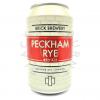I'd say:
1) Put on tyres on that can be pushed all the time and do not have to be managed
2) Mandate everyone to do 2 pitstops during a race
3) All three compounds have to be used during the race
4) Qualifying is done on qualifying tyres and the races will start on fresh new tyres
5) For free practice teams (both drivers) can only use 2 compounds to test. So the one compound left is a surprise on how it handles during the race.
I think some of your suggestions are good, and some aren't.
1) This is effectively a call for very hard tyres. If you can push without the need for management that basically means that the tyres will have to have a life-span that exceeds the GP length even when pushed to the maximum. It is to a large extent a law of nature that softer/faster tyres will degrade quicker, and thus they will in some sense need to be managed. It can only be circumvented through making them more durable but not as fast (ok, there are nuances here, but in essence the call for "grippy tyres that drivers can push on but that won't need any management" is either a call for very hard tyres or for some sci-fi-fantasy tyres).
2) I don't like this, I think what we need is more strategic variance, not more pit stops per se. One of my favourite races is the 1986 Mexican GP, where Gerhard Berger won on a no-stop strategy while most other drivers did three or even four stops. The ultimate scenario for me is when the compounds end up being calibrated enough so that there is little theoretical difference between different number of stops, and you'll see different strategies play out during the race. Mandating a certain number of stops is not a good idea (apart perhaps from Monaco where everyone would go no-stop if they could), as it limits strategic variance. What you'll most likely end up with is primarily a battle for undercuts. But perhaps it would gel with your first idea, as this means that no one will be driving on one set of tyres for too long, which reduces the need for management.
3) See point two
4) This one I like though. Preferably, the qualifying tyres should be way softer than the tyres available during the race so that the car that's fastest on quallies won't necessarily be the car that's fastest on the softest available race compound.
5) I like this, but why not let them practice solely on compounds that won't be used at all during qualifying and the race? That would give an even bigger effect.
Edited by Rediscoveryx, 01 September 2020 - 07:52.





















